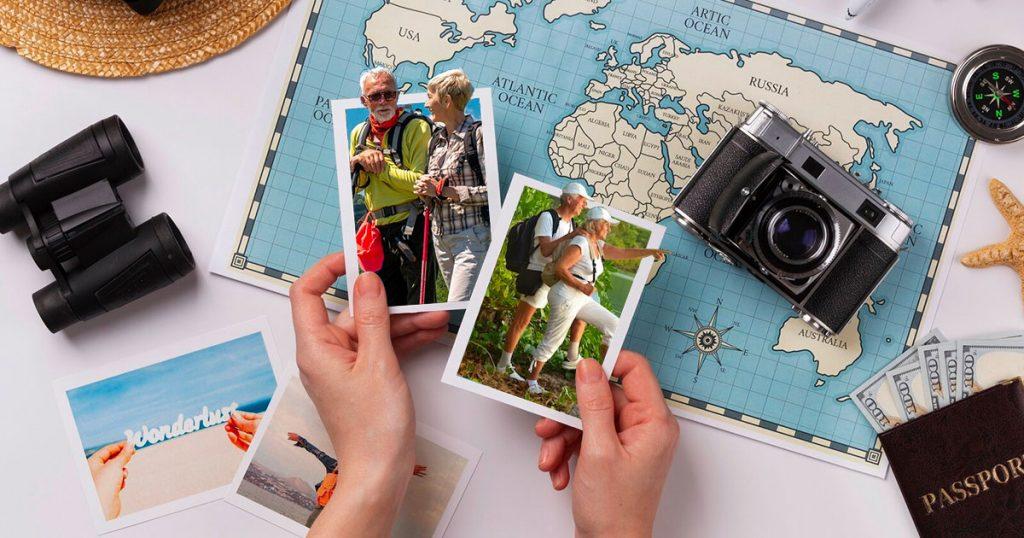Best senior trips offer more than just travel; they provide enriching experiences tailored to the unique needs and desires of seasoned adventurers. This guide explores the diverse options available, from relaxing cruises to exciting escorted tours, helping you plan an unforgettable journey that prioritizes comfort, accessibility, and memorable moments. We’ll delve into crucial aspects of trip planning, including budgeting, health considerations, and selecting destinations perfectly suited for your interests and physical capabilities.
Whether you envision exploring historical landmarks, immersing yourself in nature’s beauty, or simply unwinding in a tranquil setting, this comprehensive guide will empower you to create a senior travel experience that surpasses all expectations. We’ll cover everything from choosing the right type of trip and destination to managing your budget and ensuring a safe and enjoyable adventure.
Defining “Best” Senior Trips
Planning the perfect senior trip requires careful consideration of several key factors, moving beyond simply choosing a destination. The ideal trip prioritizes comfort, enjoyment, and accessibility, ensuring a memorable and stress-free experience for all participants. Understanding the priorities of seniors allows for the creation of truly exceptional travel plans.
Factors Seniors Prioritize When Choosing a Trip
Seniors often prioritize different aspects of a trip compared to younger travelers. Accessibility is paramount, ensuring ease of movement and navigation. The pace of the itinerary is also crucial; a relaxed schedule with ample time for rest and recuperation is preferred over a jam-packed itinerary. The types of activities offered should cater to varying interests and physical capabilities, with options for both active and passive participation. Finally, budget plays a significant role, as seniors may have fixed incomes and need to plan accordingly.
Comparison of Different Trip Types
Several trip types cater to senior travelers, each with its own advantages and disadvantages. Cruises offer all-inclusive amenities, convenient transportation, and a variety of onboard activities. However, they can be less flexible than other options, and the constant motion may not suit everyone. Escorted tours provide a structured itinerary with transportation and guided experiences, relieving seniors of logistical concerns. However, they may lack the spontaneity of independent travel. Independent travel offers the greatest flexibility, allowing seniors to explore at their own pace and choose their activities. However, it requires more planning and self-sufficiency.
Considering Physical Limitations and Health Concerns
Trip planning for seniors must carefully consider physical limitations and health concerns. Pre-existing conditions, mobility issues, and potential health risks should be assessed before finalizing any itinerary. Choosing destinations with accessible infrastructure, such as ramps, elevators, and accessible restrooms, is vital. The itinerary should include ample rest periods and avoid strenuous activities. Travel insurance that covers medical emergencies should be secured. It’s advisable to consult with a physician before embarking on any significant trip.
Sample Itinerary Considering Diverse Senior Interests and Abilities
A ten-day trip to coastal Maine could cater to diverse interests and abilities. The itinerary might include a scenic drive along the coast, visiting charming towns like Kennebunkport and Camden. Gentle walking tours of historic sites could be interspersed with relaxing boat trips for whale watching or scenic harbor cruises. Opportunities for art appreciation at local galleries and museums could be balanced with opportunities for relaxation and rest at charming bed and breakfasts. Meals could be a mix of casual dining and fine dining experiences, catering to different preferences and dietary needs. The pace would be relaxed, allowing for flexibility and adjustments based on individual needs and preferences. This itinerary would prioritize accessibility, offering options for those with limited mobility while still providing engaging experiences for more active participants.
Popular Senior Trip Destinations
Choosing the perfect senior trip requires careful consideration of various factors, including accessibility, activities, and climate. This section highlights popular destinations categorized by region and interest, detailing their suitability for senior travelers. We’ll explore accessibility features and weigh the pros and cons of each location to aid in your decision-making process.
Destinations Focused on History and Culture
Many senior travelers appreciate destinations rich in history and cultural experiences. These trips often involve moderate walking and exploring historical sites. Careful planning is needed to ensure a comfortable pace and suitable accessibility.
- Charleston, South Carolina, USA: Known for its charming architecture, horse-drawn carriages offer a gentle way to explore the historic district. Many historic sites offer wheelchair access, though some may have limited elevator access to upper levels. Pros: Rich history, beautiful architecture, pleasant climate (spring/fall ideal). Cons: Can be humid in summer, some cobblestone streets may be challenging.
- Rome, Italy: Rome offers a wealth of historical sites, from the Colosseum to the Vatican City. Accessibility varies widely across sites; some offer ramps and elevators, while others may be challenging for wheelchair users. Pros: Rich history, stunning architecture, delicious food. Cons: Can be crowded, navigating cobblestone streets can be difficult, some sites have limited accessibility.
- Kyoto, Japan: Kyoto boasts numerous temples, gardens, and traditional neighborhoods. While some temples offer wheelchair access, others may involve stairs and uneven terrain. Pros: Beautiful gardens, serene atmosphere, unique cultural experiences. Cons: Can be crowded during peak season, some sites have limited accessibility.
Destinations Emphasizing Relaxation and Nature
For seniors seeking relaxation and rejuvenation, destinations offering tranquil settings and gentle activities are ideal. These locations prioritize comfort and ease of movement.
- Hawaii, USA: Hawaii offers stunning beaches, lush landscapes, and a relaxed atmosphere. Many resorts cater to seniors with accessible rooms and facilities. Pros: Beautiful beaches, warm climate, relaxing atmosphere. Cons: Can be expensive, some activities may be physically demanding.
- Costa Rica: Costa Rica boasts diverse ecosystems, from rainforests to beaches. While some areas may be challenging to navigate, many eco-lodges offer accessible accommodations and guided tours suitable for seniors. Pros: Stunning natural beauty, diverse wildlife, relaxing atmosphere. Cons: Some areas may be remote and require more effort to access.
- The Canadian Rockies: The Canadian Rockies offer breathtaking mountain scenery and opportunities for scenic drives and gentle hikes. Many hotels and lodges offer accessible rooms and facilities. Pros: Stunning scenery, fresh air, opportunities for gentle outdoor activities. Cons: Can be chilly, some activities may require more physical exertion.
Comparative Table of Senior Trip Destinations
This table provides a comparative overview of the destinations discussed, considering cost, activities, accessibility, and climate. Cost is categorized as Low, Medium, or High, and Accessibility is rated as Excellent, Good, or Fair, reflecting the overall accessibility of the destination, not individual sites.
| Destination | Cost | Activities | Accessibility | Climate |
|---|---|---|---|---|
| Charleston, SC | Medium | Historical sightseeing, carriage rides | Good | Subtropical |
| Rome, Italy | High | Historical sightseeing, museums | Fair | Mediterranean |
| Kyoto, Japan | Medium-High | Temple visits, garden strolls | Good | Temperate |
| Hawaii, USA | High | Beach relaxation, scenic drives | Excellent | Tropical |
| Costa Rica | Medium-High | Nature tours, wildlife viewing | Good | Tropical |
| Canadian Rockies | Medium-High | Scenic drives, gentle hikes | Good | Continental |
Trip Planning and Logistics
Planning a memorable and stress-free senior trip requires careful consideration of various factors, from budgeting and booking to insurance and packing. Thorough preparation ensures a smooth and enjoyable experience, allowing seniors to focus on creating lasting memories. This section details the key steps involved in planning a successful senior trip.
Budgeting for the Trip
Creating a realistic budget is the cornerstone of successful trip planning. Begin by estimating the total cost, encompassing flights, accommodation, activities, meals, transportation, and spending money. Consider using budgeting apps or spreadsheets to track expenses. For example, a two-week European trip might require a budget of $5,000-$10,000 per person, depending on the chosen destinations and travel style. Factor in potential unexpected costs, such as medical emergencies or flight delays, by setting aside a contingency fund of at least 10-20% of the total estimated cost.
Booking Flights and Accommodation
Once the budget is set, booking flights and accommodation should follow. Consider booking flights and accommodations well in advance, especially during peak seasons, to secure the best prices and availability. Utilize flight comparison websites and travel agencies to find the most suitable options. For accommodation, research senior-friendly hotels or resorts offering amenities like accessible rooms and transportation services. Always read reviews and compare prices before making a reservation. Booking directly with airlines and hotels often provides more flexibility and better customer service.
Travel Insurance for Seniors
Travel insurance is crucial for senior travelers, offering protection against unforeseen circumstances. Several options exist, including comprehensive plans covering medical emergencies, trip cancellations, and lost luggage. Specific policies cater to the unique needs of older travelers, offering higher medical coverage limits and broader coverage for pre-existing conditions. Consider factors such as the destination’s medical facilities, the length of the trip, and the traveler’s health condition when choosing a policy. For instance, a policy with extensive medical evacuation coverage might be beneficial for a trip to a remote area.
Organizing Essential Travel Documents
Maintaining organized travel documents is paramount for a smooth journey. Compile a digital and physical copy of essential documents, including passports, visas (if required), flight tickets, hotel confirmations, travel insurance policy details, and any necessary medical records or prescriptions. Consider using a travel wallet or a dedicated folder to keep physical copies organized. Storing digital copies in the cloud or on multiple devices ensures access even if one device is lost or damaged. A well-organized system prevents unnecessary stress and delays during the trip.
Packing Checklist for Senior Travelers
Packing strategically is crucial for senior travelers. Create a checklist encompassing comfortable and practical clothing suitable for the destination’s climate. Include comfortable walking shoes, necessary medications, toiletries, and any assistive devices. Pack light to avoid overexertion, utilizing lightweight and versatile clothing items. Remember essential documents, chargers, and any personal items providing comfort and familiarity. Consider packing a small first-aid kit containing common medications and supplies. A detailed packing list prevents forgetting essential items and simplifies the packing process.
Activities and Experiences
A well-planned senior trip should offer a diverse range of activities catering to varying levels of physical ability and personal interests, ensuring a balance between relaxation and gentle exploration. The key is to create an itinerary that promotes enjoyment and well-being, minimizing stress and maximizing the opportunity for cherished memories.
Choosing activities that are both engaging and manageable is crucial for a successful senior trip. Consider the group’s average fitness level and any pre-existing health conditions when making selections. Prioritizing relaxation and incorporating moderate exertion will help prevent travel fatigue and ensure everyone feels refreshed and energized throughout the trip.
Suitable Activities for Various Destinations
Activities should be tailored to the specific destination. A trip to a coastal town might include leisurely walks along the beach, gentle boat trips, and visits to local markets. In contrast, a trip to a mountainous region could offer scenic gondola rides, moderate hikes on well-maintained trails, and visits to charming mountain villages. Always ensure activities are accessible and adaptable to individual needs.
Managing Travel Fatigue and Maintaining a Comfortable Pace
Travel fatigue is a common concern for seniors. Strategies to mitigate this include incorporating regular rest periods throughout the day, scheduling shorter, less strenuous activities on travel days, and allowing ample time for relaxation and personal downtime. Consider booking accommodations with easy access to amenities and comfortable seating arrangements for those who may need it. Avoid over-scheduling and allow flexibility within the itinerary. A slower pace promotes enjoyment and prevents exhaustion.
Opportunities for Social Interaction and Engagement
Social interaction is an essential element of a fulfilling senior trip. Group dinners, optional excursions, and shared experiences provide opportunities for bonding and creating lasting memories. Consider incorporating activities that encourage conversation and interaction, such as cooking classes, wine tastings, or guided tours with engaging guides. Organized games or trivia nights can also be a fun way to foster camaraderie among participants.
Sample Activities for Varying Mobility and Interests
The following list provides examples of activities suitable for different mobility levels and interests, highlighting the importance of inclusivity and personalized experiences.
- Low Mobility/Relaxation Focused: Spa treatments, leisurely boat rides, scenic drives, afternoon tea, visiting museums with accessible entrances, attending local performances (theater, music).
- Moderate Mobility/Moderate Exertion: Guided walking tours (at a slower pace), gentle bike rides on flat terrain, visiting historical sites with manageable walking distances, participating in a cooking class, enjoying a wine tasting.
- High Mobility/Active Exploration: Hiking on well-maintained trails (with varying difficulty options), kayaking or canoeing on calm waters, exploring local markets on foot, taking a scenic train journey, visiting national parks with accessible viewpoints.
- Interests-Based Activities: Photography workshops, painting classes, historical reenactments, attending local festivals, visiting art galleries, exploring botanical gardens.
Budgeting and Financing
Planning a memorable senior trip requires careful consideration of the financial aspects. A well-structured budget ensures a stress-free and enjoyable experience, allowing you to focus on creating lasting memories rather than worrying about unexpected expenses. This section explores various financing options and strategies for managing your travel costs effectively.
Financing a Senior Trip
Several avenues exist for financing a senior trip. Many seniors utilize personal savings accumulated throughout their working years. This method offers the greatest control and flexibility. Alternatively, leveraging travel rewards programs, such as airline miles or credit card points, can significantly reduce travel costs. Accumulated points can be redeemed for flights, accommodation, or even activities. Finally, traveling in a group often unlocks substantial discounts on tours, transportation, and accommodation, making it a cost-effective option.
Budget-Friendly Travel Options for Seniors
Budget-conscious seniors can still enjoy fantastic trips by choosing affordable travel options. Consider traveling during the shoulder season (spring or fall), when prices are generally lower than peak summer months. Opting for accommodations such as comfortable but less luxurious hotels or guesthouses can save significantly on lodging. Choosing destinations with lower overall costs of living, such as certain regions in Europe or Southeast Asia, can also stretch your budget further. Furthermore, utilizing public transportation instead of taxis or rental cars can significantly reduce transportation expenses. Finally, exploring free or low-cost activities, such as visiting parks, museums with free admission days, or attending local events, adds value without impacting the budget.
Managing Travel Expenses Effectively
Effective expense management is crucial for a successful senior trip. Prior to departure, create a detailed itinerary, including all planned activities and estimated costs. This allows for accurate budgeting and helps avoid overspending. Utilize budgeting apps or spreadsheets to track expenses meticulously throughout the trip. Take advantage of free Wi-Fi to avoid roaming charges on your mobile phone. Pack light to avoid checked baggage fees. And, consider purchasing a travel insurance policy to protect against unforeseen circumstances, such as medical emergencies or trip cancellations.
Sample Senior Trip Budget Breakdown
Let’s consider a hypothetical 7-day trip to a European city like Prague for two people.
| Category | Estimated Cost |
|---|---|
| Flights (round-trip, per person) | $800 |
| Accommodation (7 nights, double occupancy) | $700 |
| Activities and Entrance Fees | $350 |
| Food and Drinks | $500 |
| Transportation (local transport) | $150 |
| Miscellaneous Expenses (souvenirs, etc.) | $100 |
| Total Estimated Cost (per person) | $1600 |
Note: This is a sample budget and costs may vary depending on the time of year, specific choices, and individual spending habits. Adjust the figures to reflect your own preferences and chosen destination.
Health and Safety Considerations
A successful senior trip hinges not only on exciting destinations and well-planned itineraries but also on the health and safety of all participants. Prioritizing well-being ensures everyone enjoys the trip to the fullest and returns home safe and sound. This section details crucial steps to take before, during, and after the trip to mitigate potential risks.
Pre-Trip Health Checkups and Necessary Medications
Before embarking on any senior trip, a comprehensive health checkup is essential. This allows for the identification of any pre-existing conditions that might be exacerbated by travel or activities. Consult your physician well in advance of the trip to discuss any potential health concerns and obtain necessary vaccinations or prescriptions. Discuss any medications you regularly take and ensure you have an adequate supply for the duration of the trip, plus a few extra days in case of delays. Consider carrying a copy of your medical records, including allergies and any relevant medical history, for easy access in case of emergencies. It’s also wise to inform your doctor of your travel plans so they can provide tailored advice and be aware of your whereabouts.
Handling Medical Emergencies While Traveling
Having a plan for medical emergencies is crucial. Before departure, research the nearest hospitals and clinics to your destinations. Familiarize yourselves with local emergency numbers (e.g., 911 equivalent in the destination country). Travel insurance is strongly recommended; it can cover emergency medical expenses, evacuations, and other unforeseen circumstances. Ensure that your travel insurance policy adequately covers medical emergencies and includes provisions for repatriation if necessary. For example, a policy might cover costs associated with an unexpected hospitalization, air ambulance transport back home, or emergency dental care. Consider carrying a list of emergency contacts, including family, friends, and your doctor, with their phone numbers and email addresses.
Staying Safe and Healthy During the Trip
Maintaining good health and safety practices throughout the trip is paramount. Staying hydrated is vital, especially in warmer climates. Carry a reusable water bottle and refill it regularly. Pay close attention to food safety; choose well-cooked foods from reputable establishments and avoid consuming unpasteurized dairy products or raw seafood. Protect yourselves from the sun by wearing sunscreen with a high SPF, hats, and sunglasses. Regular handwashing is crucial to prevent the spread of germs. Pack insect repellent to protect against mosquito bites and other insect-borne illnesses. Remember to get enough rest and avoid overexertion, especially during physically demanding activities. Consider packing a basic first-aid kit containing essentials like bandages, antiseptic wipes, pain relievers, and any personal medications.
Emergency Contact Card Design
An emergency contact card should be easily visible and readily accessible. It should be a sturdy, laminated card approximately 3″ x 5″ in size. The information should be clearly printed in large, bold font. A suggested design would include the following sections:
| Section | Information |
|---|---|
| Traveler’s Name | [Traveler’s Full Name] |
| Emergency Contact Name | [Emergency Contact’s Full Name] |
| Relationship | [Relationship to Traveler, e.g., Spouse, Child] |
| Phone Number | [Emergency Contact’s Phone Number] |
| Email Address | [Emergency Contact’s Email Address] |
| Allergies/Medical Conditions | [List of Allergies and Medical Conditions] |
| Medications | [List of Medications and Dosages] |
Final Thoughts
Planning the perfect best senior trip involves careful consideration of individual preferences and practicalities. By thoughtfully evaluating factors such as accessibility, budget, and desired activities, you can craft a journey that is both enriching and comfortable. Remember, the goal is to create lasting memories while prioritizing your well-being and enjoyment. Embrace the adventure and embark on a travel experience tailored to your unique needs and aspirations. Your dream senior trip awaits!




